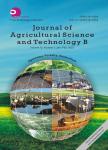Use of Agroecological Techniques by Smallholder Farmers to Improve Sorghum Productivity in Burkina Faso
作者机构:Department of Natural Resource Management Institute for Environment and Agricultural Research (INERA) 04 BP 8645 Ouagadougou 04 Burkina Faso Institute for Environment Science and Rural Development (ISEDR) University of Dédougou BP 176 Dédougou Burkina Faso Groundswell International PO Box 2257 Asheville NC 28802 USA Association Minim Song Panga (AMSP) BP 268 Kaya Burkina Faso Association Nourrir Sans Détruire (ANSD) 09 BP 1670 Ouagadougou 09 Burkina Faso
出 版 物:《Journal of Agricultural Science and Technology(B)》 (农业科学与技术(B))
年 卷 期:2018年第8卷第8期
页 面:499-506页
学科分类:09[农学]
主 题:Agroecological techniques sorghum yield compost mineral fertilizer crop rotation mixed cropping zai.
摘 要:The prevailing farming system in Burkina Faso is smallholder agriculture based on cereal production, especially sorghum (Sorghum bicolor (L.) Moench) which form the staple diet for the population. Production is constantly challenged by climate hazards, striga (Striga hermonthica (Del.) Benth.) infestation, inefficient farming practices and declining soil fertility. To address these concerns, one study on several agroecological techniques was conducted from 2013 to 2015 in a participative manner with more than 150 male and female farmers from four communities. Each farmer was asked to test out two or three agroecological techniques of his choice and to measure these new techniques against their usual farming practices. These techniques combined the use of organic fertilizer (5 t/ha) and/or mineral fertilizer (2 g/seed hole) with the systems of crop rotation and mixed cropping, in addition to the improved za? technique and the half-moon method. Plant material was composed of local landraces and improved varieties of sorghum, sesame and cowpea. On-farm application of agroecological techniques resulted in significantly increased sorghum production in all four communities. The rates of increase for grain yield were 8% for the half-moon fields and more than 130% for the rotation systems when compared to the farmers’ usual practices. More limited results were achieved with the chemical components of the soil after two years of experimentation. Only the soil’s organic matter showed improvement over the first year. This study shows that crop rotation, mixed cropping and the improved za? technique in combination with compost and improved drought-resistant varieties constitute agroecological strategies favorable to the intensification and diversification of farming systems in the studied locations. The farmers were above all impressed by the on-site management of compost by means of the za? technique which enabled large-scale fertilization of fields.



